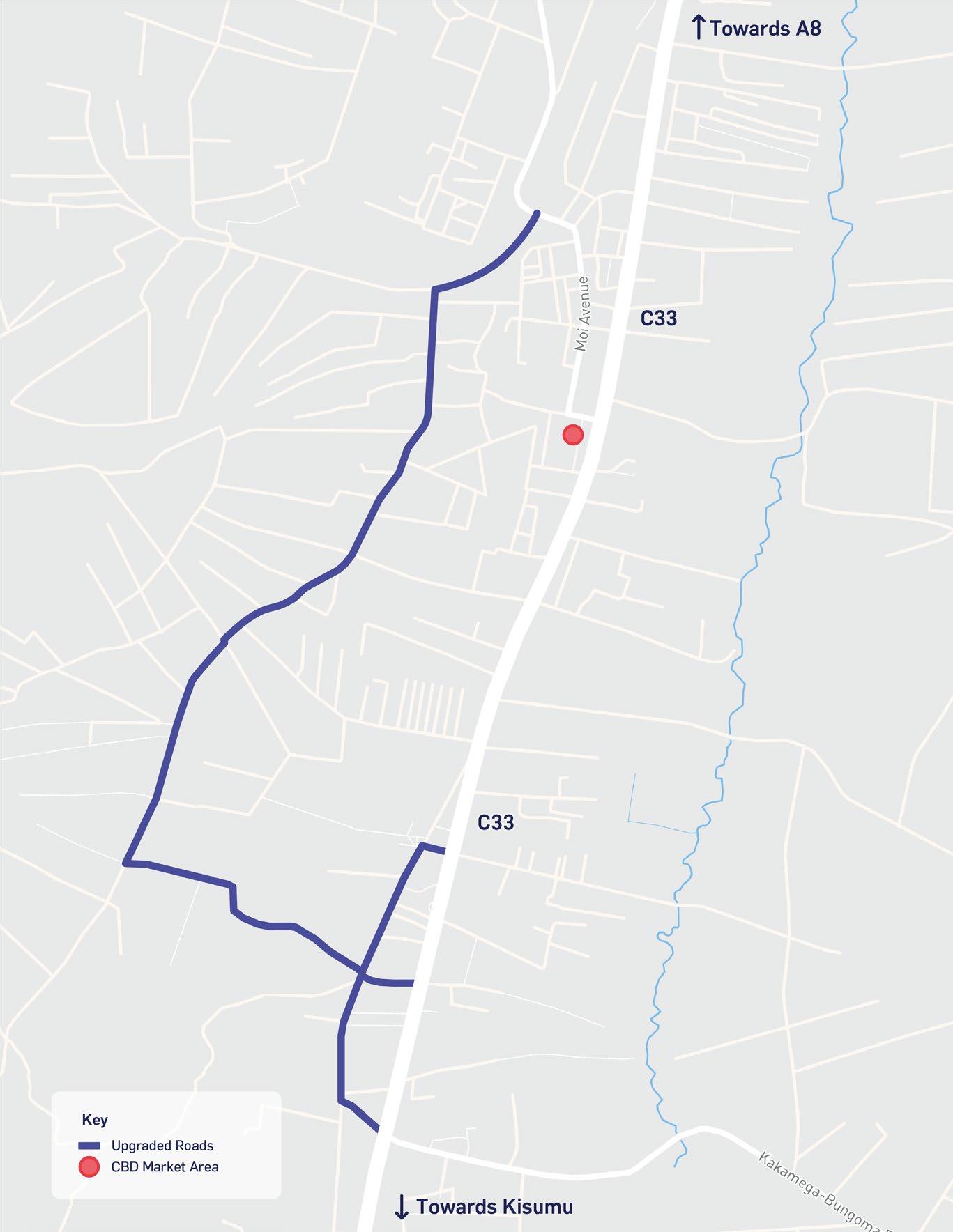
3 minute read
Figure 4-27 – Urban design principles
Urban Design Principles
The following design principles guide the development of affordable housing and infrastructure proposals and ensure that an inclusive, sustainable, and resilient design is integrated across the project.
Figure 4-27 – Urban design principles
Plan & Design
What does an Eco City look like? > Compact urban form & mixed use > Climate resilience & passive design > Flexible design > Landscape & biodiversity
How is an Eco City managed? > Clean energy > Zero-waste > Water management > Local & sustainable materials > Sustainable transport
Who is this for? > Inclusive, diverse & healthy communities
Infrastructure
People
Source: Atkins Compact urban form and mixed-use
Principle: Decentralise and diversify land uses by creating mixed use districts which become sustainable and self-sufficient neighbourhoods.
Principle: Mixed-use and compact urban developments will reduce the demand for mobility requirements helping to reduce carbon emissions and from a demographic’s perspective will encourage social integration and diversity.
Climate resilience and passive design
Principle: Promote tailored strategies for each urban development in order to take advantage of their unique characteristics and to address local climate conditions, such as reducing urban heating island (UHI), and mitigating global climate change effects.
Principle: Promote the design of passive buildings and districts to reduce electrical cooling, heating, ventilation and lighting while guaranteeing comfortable conditions for all users.
Principle: Provide ways to facilitate management of risks and disaster reduction through smart technologies, inclusive to all, in order to achieve resilient and sustainable developments. Flexible design
Principle: Foster the design of flexible uses and spaces to create resilient cities to physical, social and economic challenges. Cities are able to face and adapt to local but also global changes and dynamics, such as current social distanced measures due to the COVID-19 pandemic which require a flexible use of space.
Principle: Encourage the urban revitalization and regeneration in favour of the new development.
Landscape and biodiversity
Principle: Maximise the resilience of the ecosystems through urban landscape mitigating the urban heating stress, using plants for urban cooling and air purification. Increase the number of tree planting to absorb CO2.
Principle: Invest in green and open spaces to increase public safety and quality of life for the community.
Clean energy
Principle: To utilise local renewable energy sources such as solar energy, wind power, biomass, geothermal energy or hydroelectric power to reduce the demand of fossil fuels.
Smart integrated renewable energy systems should be implemented to achieve an efficient use of natural resources by distributing surpluses based on demand.
Zero-waste
Principle: Rethink the waste management system to turn waste into resources.
Principle: Measures including recycling, upcycling and composting waste to produce energy, i.e. plant and animal waste to produce energy sources, biomass. Special attention and studies need to be given around the reuse of industrial waste.
Principle: Promote responsible consumption across residents.
Water management
Principle: Promote sustainable urban water cycles by implementing rainwater collection, storm water retention, harvesting techniques and wastewater recycling.
Principle: Promote an efficient use for water resources, such as in drip irrigation, and ensure good water quality while protecting environmental assets.
Principle: Data-driven smart city technologies should be part of the water management strategy, improving its resilience.
Local and sustainable materials
Principle: To encourage the shortening of supply chains by using local materials and food, manufacturers and techniques, activating the local economy, minimising transport requirements and promoting local knowledge and experience.
Principle: To promote a sustainable and efficient manufacturing and agricultural industry, fostering innovation. Sustainable transport
Principle: Promote and prioritise public transport, cycling and pedestrian circulation over vehicular.
Principle: The urban design should focus on improving the public space network and designing cities with a streetscape which promotes healthy and active lifestyles where residents are encouraged to walk rather than travel by car.
Principle: Promote the use of smart technologies using information to digitalize transport infrastructure allowing the exchange of information in between vehicles, drivers, passengers and transfer hubs optimizing traffic flows. An example of this is streetlights that are capable of monitoring parking spaces and traffic patterns.
Inclusive, diverse and healthy communities
Principle: Integrate a diverse range of economic and cultural activities maximising social diversity and interaction of users within each zone. This could be achieved by promoting mixed used districts, which can benefit from 24-hour liveable cycles.
Principle: Promote social equity by providing affordable housing.
Principle: Promote the use of smart technologies to achieve healthy and inclusive communities. An example of this is a mobile phone app that helps people navigate within cities and buildings, or the use of street lighting that can monitor air quality and temperature.










